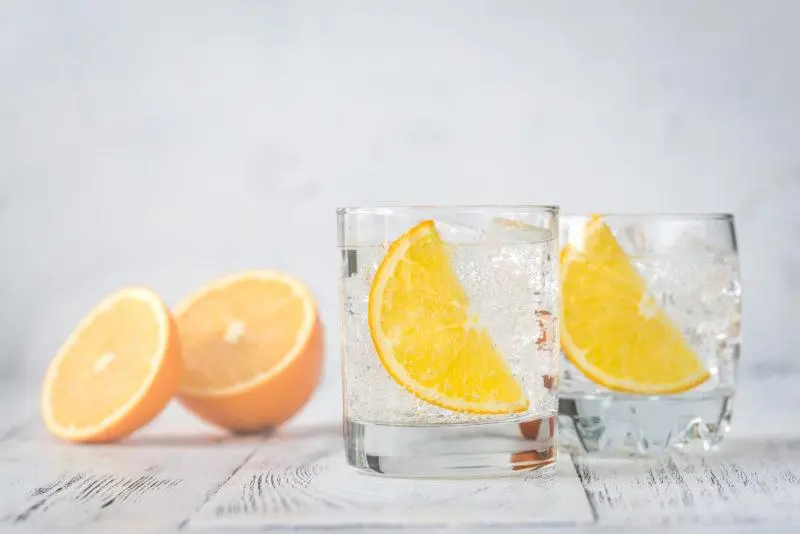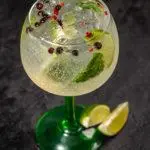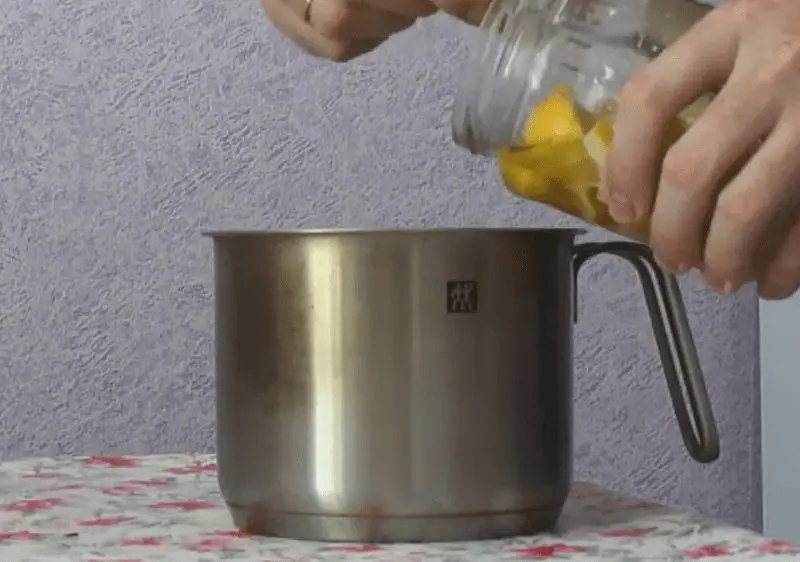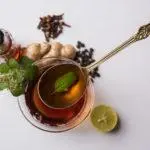Contents
Kicked out your own gin, but the hand does not turn to dilute it with store-bought Schweppes? Why not take the next step towards the perfect homemade smoothie by making your own tonic? Of course, there are certain difficulties in it – mainly with the acquisition of ingredients – but in general the recipe is quite reproducible at home. Yes, and it’s interesting!
There are many brands of good factory tonics in the world – Signor Gudimov described them in detail in his article on the perfect gin and tonic. However, among Western bartenders and mixologists-enthusiasts, self-made drinks have recently gained popularity – so to speak, without preservatives and GMOs, and even much more affordable than commercial versions.
I must say right away that there is absolutely nothing complicated in the technology of preparing such a drink – it is quite possible to build it in the most ordinary kitchen. But the taste and aroma of such a drink, I guarantee, will surprise you – there is pronounced cinchona bitterness, and acid, and spice, and a whole range of aftertastes. In addition, we will be able to adjust the sweetness on our own – another plus of homemade tonic over store-bought counterparts, often tritely cloying.

The main hitch that awaits us on the thorny path of making our own tonic is where to get hold of cinchona bark, the main and absolutely irreplaceable ingredient of this unique drink. Google is here to help you – cinchona is found on domestic sites dealing with all sorts of exotic herbs / spices, it can be ordered on aliexpress, in American and European online stores. Lemongrass is also used in many recipes – an herb with a bright characteristic citrus smell. It is sold fresh in large markets, you can also buy dried online. The rest of the ingredients shouldn’t be a problem.
Tonic – only real, homemade, containing not homeopathic, but a real amount of quinine – really has many unique properties. For example, it is able to strengthen the body, counteract a number of infections, tone up, improve mood – and even without gin! But its anti-hangover properties are especially interesting in our context – the tonic sobers up, reduces the negative effects of the withdrawal syndrome, and in Vietnam, for example, it is even used to treat the effects of drug addiction.
Homemade tonic – the easiest recipe
A recipe that is easy to reproduce at home. To begin with, we prepare a concentrated syrup with quinine and other ingredients – the syrup keeps well in the refrigerator. And before serving, simply dilute it with sparkling water in a ratio of 1: 4.

- 2 tsp cinchona bark – dry, chopped
- 1 medium lemon
- 1 medium lime
- 1 1/4 tsp citric acid*
- 1 cup lemongrass – fresh, chopped stem**
- 1 1/2 cups sugar***
- 500 ml of pure water
* – instead of acid, you can use the juice of another medium lemon
** – dried lemongrass is about 5 times less in volume, ground – 10-15 times less
*** – the original uses agave syrup, approximately 230-250 ml
How to make Homemade Tonic Syrup:
Absolutely nothing complicated. Remove the thin zest from the lemon and lime with a vegetable peeler or grater. From the remaining pulp of citrus fruits, carefully squeeze the juice. Place juice, zest, cinchona bark and other ingredients in a saucepan, pour water, bring to a boil. After that, reduce the heat to a minimum, cover the saucepan with a lid and cook for 45 minutes. Remove from heat and let cool naturally. We filter the finished syrup through cheesecloth, if necessary, also through a cotton or coffee filter to get rid of all small particles. Before diluting the concentrate, it is recommended to keep it in the refrigerator for 2 days.

“People are crazy, honestly. A person can choose any drink. It seems to drink and have fun – but no, he takes and spoils a good gin, pouring Indian water with quinine into it.
– I like. I love the taste of cinchona combined with lemon peel. From this cocktail, as if all the pores in the stomach open. No other drink invigorates me so much. I feel great after it.
– Hemingway, “Islands in the Ocean”
Tonic with spices and citrus
In general, a similar recipe – both in terms of the method and the main components. But the drink will turn out to be more subtle and harmonious – a variety of citrus fruits will set off the bitterness of the cinchona, and spices will give the tonic a characteristic “point” and additional interesting notes.

- 1 liter of clean water
- 1 each lemon, lime, grapefruit and orange
- 75g fresh chopped lemongrass
- 30 g citric acid
- 22 g crushed cinchona bark
- 10 peas allspice
- 2 small star anise
- 5 crushed cardamom pods
- 1/4 tsp ground black pepper
- 1 tsp sea or kosher salt
- 350-400 ml simple sugar syrup*
* – a simple syrup is prepared from equal parts of sugar and hot water – you just need to mix everything thoroughly and cool. You can use regular refined sugar, or you can replace it with the equivalent of cane sugar.
How to cook:
Thinly cut the zest from citrus fruits, squeeze the juice into a saucepan. Add all other ingredients except sugar syrup. Bring to a boil, reduce heat and simmer covered for 15 minutes. Allow to cool, then pour directly with the solid ingredients into a suitable jar, close carefully and transfer to the refrigerator. The future tonic needs to infuse for two days, during which time the water will finally absorb all the flavors of quinine, spices and citrus fruits. Shake the jar periodically.

After two days, drain the liquid, squeeze the remaining pulp through gauze. Carefully filter the drink from fine sediment and measure the volume. We dilute the infusion with an equal amount of simple sugar syrup, mix well and filter again if necessary. That’s all – it remains only to dilute the resulting concentrate with sparkling water or bar soda 1: 1 to get the perfect home tonic!
Tonic, or rather its first analogue – “red water” from the bark of the Peruvian cinchon tree – has been known to Europeans since 1638. Then the wife of the head of the colonial government of Peru, Viceroy Chinchon, caught malaria. On the advice of the Indians, she began to drink cinchona decoction and was successfully cured. Cinchona bark began to be supplied to Europe, it was widely used as a remedy for malaria, tropical fever and other ailments. It is known that tonic was used for prevention in the British troops – in the XNUMXth century, Her Majesty’s soldiers came up with the idea of mixing cinchona water with gin to kill the bitter taste, starting the history of one of the most popular cocktails in the world.
Tonic with alcohol tincture of quinine
The most difficult recipe for today – attention, this tonic turns out to be slightly alcoholic! To extract all the bitterness, nuances of aroma and taste from cinchona bark, pure alcohol is used, and then the tincture is gradually added to the “botanical base”, which is prepared in the same way as in previous recipes. Thus, we will be able to independently regulate the bitterness of the tonic, which is very important, because all cinchona bark is different. In addition, the tincture can be stored for an almost unlimited amount of time, and you can make a decoction of the remaining ingredients at any time in less than an hour.

- 6 g quinine bark powder
- 150 ml food grade alcohol 95,6%
- 20 g citric acid
- 20 g angelica officinalis (Angelica root)
- 30 g fresh orange peel
- 30 g fresh lemon zest
- 8 g coriander seeds
- 5 g cardamom pods
- 5 g juniper berries
- 500 ml of pure water
- 450 g sugar
Preparation:
To begin with, we prepare a bitter alcohol tincture – pour quinine powder with alcohol, seal tightly and set aside in a dark place. For complete maceration, it is enough to wait a day. After that, the tincture must be carefully, possibly repeatedly, filtered with a cotton or paper filter – it should not contain small particles. You can store this concentrate for as long as you like.

Pour all other ingredients together with sugar into a saucepan, pour water and bring to a boil. Cook over low heat for about 20 minutes, cool and filter well. After the broth has cooled down, add tincture to it – for 0.5 liters of base we need 45 ml of bitter tincture. Such a syrup is diluted with bar soda or regular soda in a ratio of 1: 4, as in the previous recipe, and this can be done directly in a glass of G&T!









